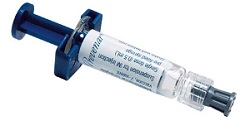 |
With the expense of vaccine production often higher than the manufacturing costs for pharmaceuticals, vaccines once led losses for their manufacturers. But today, vaccines--like Pfizer's ($PFE) Prevnar 13, which scored more than $4 billion in worldwide sales last year--can be highly profitable.
So how did it happen?
According to The New York Times, rising costs are behind the shift. That's all well and good for pharma companies that have reaped the benefits. The price of Prevnar, the world's best seller, has risen 6% each year since its 2010 FDA approval. And that top-line power has put Pfizer squarely behind the Big 3--GlaxoSmithKline ($GSK), Merck ($MRK) and Sanofi ($SNY)--in terms of vaccines revenue, despite Pfizer's lack of a product lineup outside the Prevnar franchise.
But it hasn't been such a breeze for healthcare professionals, many of whom are losing money on vaccination, and some of whom--like solo practice doctors, are typically paying higher vaccine prices--have stopped vaccinating altogether, the Times notes.
Patients haven't had it easy, either. Between price hikes, reformulations of old vaccines, and newcomers boasting lofty price tags, the cost of fully vaccinating a child with private insurance to the age of 18 has soared from $100 in 1986, to $2,192 today, the newspaper says.
So could climbing prices spark payer pushback? Drugmakers have already seen it happen in the pharma world, where pricey, next-gen treatments--like Gilead's ($GILD) hep C wonder Sovaldi--have prompted payers to take matters into their own hands in a U.S. market absent of cost watchdogs like the U.K.'s NICE.
Of course, Sovaldi, at $84,000 per 12-week course of treatment, is a far cry from the $544 list price it takes to get each child the four required doses of Prevnar. And vaccine makers have highlighted the expenses of vaccine development and production to justify the hikes: Vaccine plants cost $600 million to build, and one batch of Prevnar 13 takes two years of work, a Pfizer spokeswoman told the Times.
Still, with the continuous trend upward, some--whether payers, doctors or patients, could soon be asking how much is enough.
"It's a risky business developing vaccines, so you can explain--if not necessarily justify--the higher costs of vaccination," Dr. Alan Hinman, a former head of the CDC's immunization division and now a public health scientist, told the NYT. "A more difficult question is, after the research and development costs are recouped, why don't prices come down?"
- read the New York Times story (sub. req.)
Special Reports: Top 10 best-selling vaccines of 2013 | 10 big brands keep pumping out big bucks, with a little help from price hikes